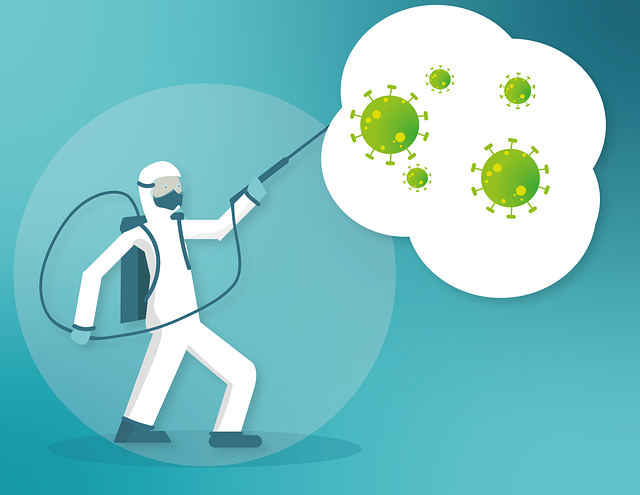COVID Clean & Disinfecting

COVID-19 INFORMATION, INFECTION PREVENTION AND CONTROL

In response to the new reality we find ourselves in, Young Contracting can address your cleaning and disinfecting requirements. Our specialized cleaning services are multi step procedures. Cleaning, Disinfecting, fogging, infection control & deep cycle cleaning. We have the tools to do the job right.
COVID-19 (Coronavirus Disease 2019) is the latest addition to the large family of coronaviruses. Several of these coronaviruses that affected the respiratory system in the past include SARS (severe acute respiratory syndrome), and MERS (Middle East respiratory syndrome). This virus is thought to be transmitted by droplets and can stay virulent on surfaces anywhere from several hours to several days. According to the EPA, “…Coronaviruses are enveloped viruses, meaning they are one of the easiest to kill [on surfaces] with the appropriate disinfectant product.”
Infection Prevention & Control Key Points:
• A combination of controls is the best way to reduce spread of COVID-19.
• Eliminating the risks and substituting with new ways of operating are the most effective controls.
• Encourage physical distancing through barriers, signage, floor markings and traffic flow controls, and limit the number of people in a space.
• Practice good hand hygiene and thorough cleaning and disinfecting.
• Use personal protective equipment and follow guidance to use it properly.
• Operators must still adhere to Occupational Health & Safety requirements.
Cleaning and disinfecting
Cleaning and disinfecting is already part of standard practice for most operators. Many industries have specific standards they follow to ensure the safe operation of their settings and services. All operators should continue to follow their industry specific cleaning and disinfecting standards.
For COVID-19, operators should consider the following guidelines when developing a relaunch plan for cleaning and disinfecting their settings and services:
• Develop and implement procedures for increasing the frequency of cleaning and disinfecting of high traffic areas, common areas, public washrooms and showering facilities.
• Frequently clean and disinfect high-touch/shared surfaces such as:
– Doorknobs, light switches, toilet handles, faucets and taps, elevator buttons, railings.
– Phones, computers, remote controls, keyboards, desktops, conference room equipment, cash registers, touch screens, debit/credit machines, surface counters, customer service counters, menus.
– Equipment handles, hand tools, machinery control panels, seat belt buckles, joysticks, steering wheels and controls on powered mobile equipment.
– Items that are loaned, rented, or made freely available for use by multiple individuals, such as shopping carts and baskets, wheelchairs, and pushcarts.
• Limit hours of operations to allow for frequent cleaning.
• If possible, establish a procedure for attendees to report poor sanitary conditions, or if cleaning or disinfecting is required.
• Ensure disposable towels and spray cleaners, or disposable wipes, are available to workers, volunteers and (as necessary) patrons to regularly clean commonly used surfaces.
For operators that do not already have industry specific cleaning and disinfecting standards, the following protocols should be used:
• Cleaning refers to the removal of visible soil. Cleaning is not intended to kill germs but is highly effective at removing them from a surface. Disinfecting refers to using a chemical to kill germs on a surface. Disinfecting is only effective after surfaces have been cleaned of dirt and oils.
– Use a “wipe-twice” method to clean and disinfect. Wipe surfaces with a cleaning agent to remove soil and wipe again with a disinfectant.
• Regular household cleaning and disinfecting products are effective against COVID-19 when used according to the directions on the label.
– Preferably, use a product labeled as a disinfectant that has a Drug Identification Number (DIN)/ is Health Canada approved.
· Health Canada has approved several hard-surface disinfectants and hand sanitizers for use against COVID-19. Use these lists to look up the DIN number or NPN number (for hard-surface disinfectants and hand sanitizers) of the product you are using or to find an approved product.
· Make sure to follow instructions on the product label to disinfect effectively.
– Alternatively, use a bleach-water solution with 20 ml (4 teaspoons) of unscented, household bleach to one litre (4 cups) water. Ensure the surface remains wet with the bleach water solution for 1 minute.
